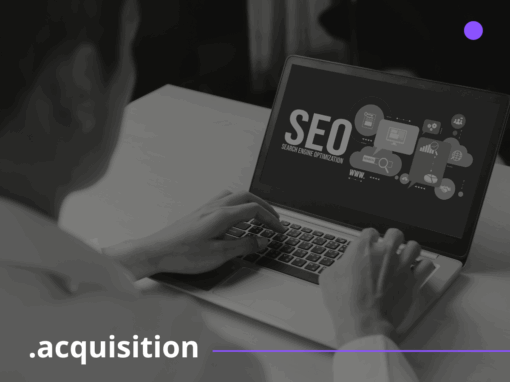When we talk about SEO for e-commerce, it’s easy to focus on keywords, optimized descriptions, and well-crafted titles. And yes, all of that matters. But there’s another side — more technical, less visible — that can block your results without you even noticing.
It’s no use attracting customers if they can’t access your store or feel lost trying to navigate it. That’s why understanding the behind-the-scenes of your website — how it loads, whether it’s accessible, if it communicates well with search engines — can be the turning point in your performance.
This is the realm of technical SEO. And that’s where we’re going to dive in: the details that turn an ordinary site into a ranking and conversion machine. We’ll explore what really makes a difference, what you can start improving right now, and how tools like VTEX IO, headless commerce, and Google Search Console come into play.
Ready? Just keep reading!
How Do Search Console and Monitoring Tools Help Keep Everything on Track?
Before making any technical adjustments, you need to understand what’s working and what’s not. That’s where tools like Google Search Console and Google Analytics (GA4) come in.
They’re not just dashboards full of data — they act as maps of your website’s behavior. They show if there are pages with errors, whether Google is finding your products, if any key areas are invisible to the search engine, and even if your mobile version is hurting your performance.
This analysis is the starting point because it shows where you can improve your structure, adjust URLs, eliminate duplicate content, and fix indexing errors that often go unnoticed.
Yes, this part of SEO for e-commerce requires a technical eye. But the good news is, with the right tools, you don’t need magic — just a method.
Why Do Load Speed and Accessibility Change Everything in E-commerce?
Your customer doesn’t want to wait — and neither does Google. Site speed directly impacts the browsing experience — and your rankings.
In the world of e-commerce, where every click matters, lost seconds mean abandoned carts. A fast-loading site boosts conversion rates and lowers acquisition costs. A slow site, on the other hand, drives users away, causes frustration, and damages trust in your brand. Proof? A study by Fecomércio SP shows that 75% of consumers abandon purchases if the site takes too long to load.
Now, add accessibility to the mix. Imagine a visually impaired user trying to buy a product on your site, but there’s no image description or proper contrast. That person will leave and rightly so.
Google also takes accessibility into account, as accessible sites tend to perform better organically, according to Sebrae, precisely because they offer a more complete experience for all user profiles.
Additionally, keep an eye on Core Web Vitals, a set of metrics Google uses to measure user experience. These include:
- LCP (Largest Contentful Paint): time it takes to load the largest visible element;
- FID (First Input Delay): time it takes to respond to the user’s first interaction;
- CLS (Cumulative Layout Shift): visual stability of the page.
So yes, accessibility and speed are not minor details. They’re ranking factors, and ignoring them means leaving money on the table.
What Is Headless Commerce and How Does It Improve Technical Performance?
Have you heard of headless commerce? The term may sound technical (and it is), but the impact is very practical. It means that the front-end (the visual part of your site) is decoupled from the back-end (where data and functionality live).
In practice, this allows for faster, lighter, and more customized user experiences. And when it comes to technical SEO, this decoupled structure brings several benefits, including faster load times, easier search engine optimization, and more agile updates without needing to modify everything at once.
Companies using platforms like VTEX IO benefit from this decoupled model, which is built for performance, scalability, and of course — SEO.
Important: in headless projects, it’s crucial to ensure your content is rendered in a search-engine-friendly way. Techniques like server-side rendering (SSR) or pre-rendering are key so that Google can index all your pages correctly, even if the front-end uses modern frameworks like React.
This means you can build tailored experiences for each channel—without sacrificing the technical standards that help your site rank at the top.
How to Test Your Site’s Speed and What You Can Improve Right Now
Measuring is the first step. And there are several great free tools to help:
- PageSpeed Insights (Google): shows how your page performs on both desktop and mobile, plus offers practical improvement suggestions;
- Lighthouse: built into Chrome, it generates a full technical report including accessibility and SEO;
- GTMetrix: great for viewing real-time load speed, identifying heavy scripts, and prioritizing optimizations;
- WebPageTest: ideal for advanced analysis, including comparisons across different countries and networks.
After testing, what should you do?
- Optimize images: use lightweight formats (like WebP) and resize them correctly;
- Avoid unnecessary scripts: too many plugins and tools slow your site down;
- Use smart caching: speeds up response time;
- Implement asynchronous loading: delays non-essential elements so they don’t block what’s most important.
Always remember that small improvements add up. And in technical SEO, that’s worth its weight in gold.
What Should You Check Before Saying Your Technical SEO Is on Point?
To wrap up, here’s a checklist to guide your next optimizations:
- Is your site fast (on both desktop and mobile)?
- Is it secure?
- Do you regularly test performance?
- Are images optimized?
- Are URLs, titles, and metadata clear and unique?
- Do you have a well-configured XML sitemap and robots.txt?
- Is the layout responsive across all devices?
- Is navigation simple and is checkout smooth?
- Is the content accessible to all users?
- Are monitoring tools active?
- Are pages free from technical errors (404s, bad redirects, etc.)?
If you answered “not yet” to some of these, now you know where to start for strong site optimization, right?
At the end of the day, SEO for e-commerce is about building a technical foundation that supports a great experience — for both users and Google. If you’re aiming for consistent organic growth, this is the way forward. You can’t build traffic on a fragile foundation.
Want help organizing all these demands more clearly? It’s worth talking to a specialized team that understands both structure and strategy. Your e-commerce — and the search engines — will thank you.
And if you want to stay updated on the latest in the e-commerce world, just subscribe to our newsletter.
| <div role=”main” id=”br-tofu-newsletter-blog-7ab6c1cd2c1cb543e9c5″></div><script type=”text/javascript” src=”https://d335luupugsy2.cloudfront.net/js/rdstation-forms/stable/rdstation-forms.min.js”></script><script type=”text/javascript”> new RDStationForms(‘br-tofu-newsletter-blog-7ab6c1cd2c1cb543e9c5’, ‘UA-85695786-1’).createForm();</script> |




